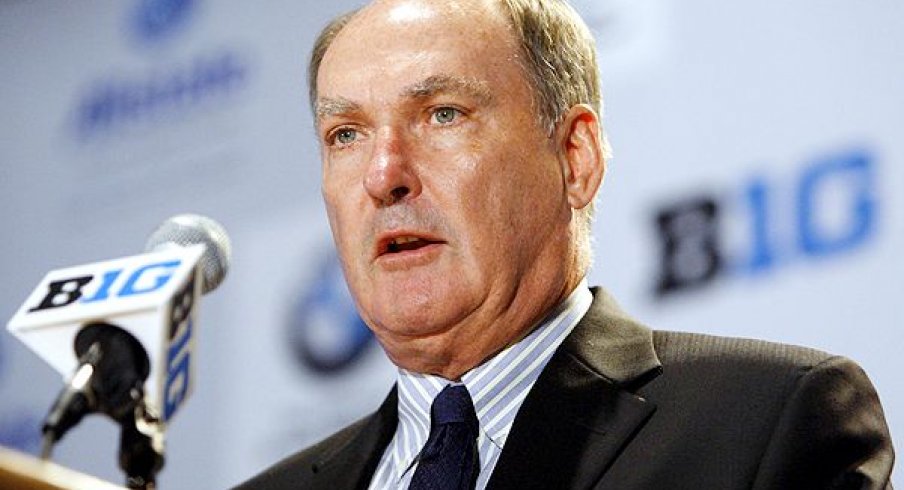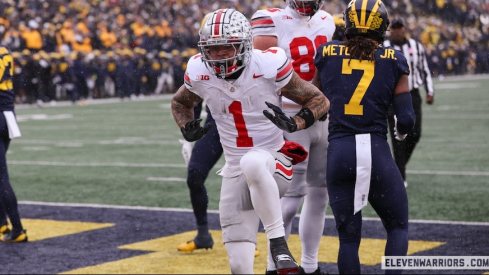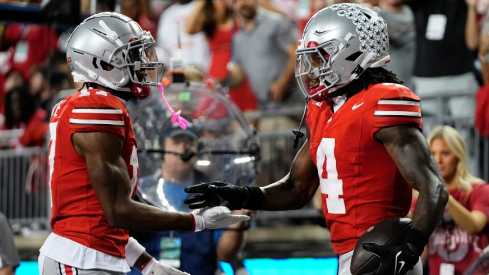In 2004, the Big Ten Conference began exploring the idea of creating its own network. A decade after those talks and seven years after the Big Ten Network launched amid impending doom, according to a bevy of detractors, it stands as a model of success in the ever-growing conference network race.
It reaches an estimated 100 million households in the United States and Canada and has agreements with more than 300 cable-service providers.
“The exposure for the student-athletes and institutions has been fantastic, better than we all envisioned,” Ohio State director of athletics Gene Smith told Eleven Warriors. “Football and basketball are drivers, but the opportunity for Olympic sport coverage continues to be significant and growing.”
BTN also prints money.
The Lafayette Journal and Courier reported Saturday through an open records request that conference members (excluding Maryland and Rutgers) are projected to receive $44.5 million in 2017-18 through the conference’s distribution plan. The league’s TV contract represents 70-75 percent of that number with NCAA distributions, bowl games and the conference’s football championship game and the men's basketball tournament filling out the rest.
Maryland and Rutgers will not receive full shares until the 2020-21 academic year after the conclusion of a six-year financial integration plan, according to the conference. In 2017-18, the Big Ten projects $33 million alone from TV revenue for the 12 schools. That’s when the current 10-year, $1 billion deal expires.
It was signed the year BTN launched, which set the conference down a green road. It only took the fledgling network five years to become profitable, and last year it provided member schools close to $8 million out of their $25.7 million payday. This year’s payout is expected in the neighborhood of $27 million.
Since the BTN’s inception, it’s provided nearly $50 million to Ohio State and the original nine, plus Penn State. Revenues from the network have surged past 60 percent since its first year on air. In 2006, the year before it was formed, schools received $14 million.
The money has left athletic departments with a financial windfall, contributing to the renovation and building of new facilities and retaining coaches.
There’s a push for more primetime games in the new TV contract. Ohio State and Michigan have played in more night games the past five years than any other five-year period in program history. Their national brands attract eyeballs, flashing dollar signs in the direction of advertisers and TV executives.
“Primetime games have always been important, and their importance continues to grow as matchups become more intriguing and televisions partners become more creative with viewership windows,” Smith said.
The Big Ten’s nine-game conference schedule takes effect in 2016, creating more games between conference foes and upping value. Conferences also will reap rewards from the new College Football Playoff. The Big Ten expects to hand out nearly $5 million to its members next season from bowl payouts, with the number rising to $7.1 million the following year.
Big Ten deputy commissioner Brad Traviolia told the Journal and Courier that the conference’s financial projections have been very accurate and they don’t expect any discrepancies in the future.
“Going forward, how we do in the next round of television negotiations will determine where those numbers go,” he said.
The Big Ten’s business savvy has led to $315 million in revenue for fiscal 2012, according to USA Today. That’s $42 million more than the Southeastern Conference, which reported $314.5 million in revenues the very next year, but $317.9 million in total expenses. The SEC’s 12 members (excluding Missouri and Texas A&M) received $21 million from the conference. TV revenue was just over $200 million, up more than $40 million from the previous year. Industry experts expect each school to haul in $30 million once the SEC Network is launched.
Eyeing BTN’s success, Mike Slive and the SEC created its own network, which is owned and operated by ESPN. The SEC Network is not taking a soft approach to TV. Brent Musberger, Tim Tebow, Joe Tessitore and Jesse Palmer will all work for the network, giving it immediate legitimacy.
But the success rate will be measured in dollars and cents.


